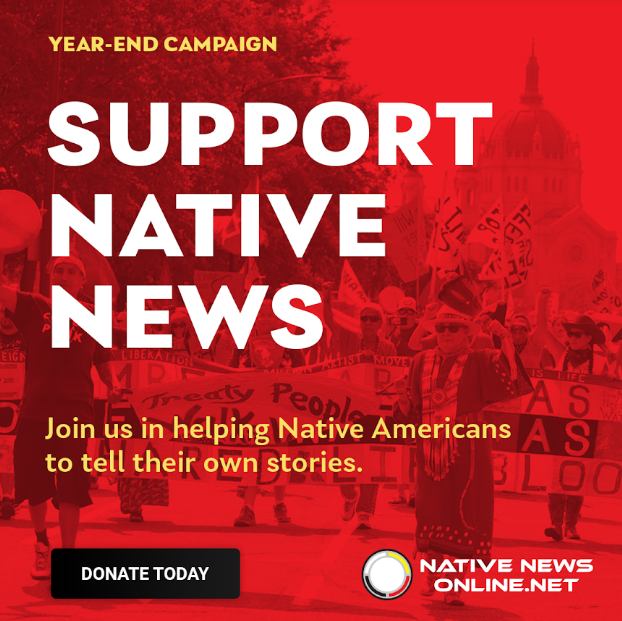
- Details
- By Native News Online Staff
The U.S. Attorney’s Office – Western Washington has charged two non-Native artists in separate cases of selling Native art under false pretenses in two different art galleries in the popular Pike Place Market in downtown Seattle, Wash.
The two men are charged with violating the Indian Arts and Crafts Act (IACA) by representing themselves as Native American artists, when they have no tribal membership or heritage, according to U.S. Attorney Nick Brown.
Want more Native News? Get the free daily newsletter today.
Lewis Anthony Rath, 52, of Maple Falls, and Jerry Chris Van Dyke, 67, also known as Jerry Witten, of Seattle, appeared in U.S. District Court in Seattle on Friday.
"By flooding the market with counterfeit Native American art and craftwork, these crimes cheat the consumer, undermine the economic livelihood of Native American artists, and impair Indian culture," Edward Grace, assistant director of the U.S. Fish and Wildlife Service Office of Law Enforcement, said in a news release issued by the U.S. Attorney’s Office.
The charges stem from investigations made after two separate complaints were to the Indian Arts and Crafts Board.
The U.S. Attorney’s Office says Rath falsely claimed to be a member of the San Carlos Apache Tribe, and Van Dyke falsely claimed membership in the Nez Perce Tribe. The goods included masks, totem poles and pendants sold in 2019 at Raven's Nest Treasure in Pike Place Market and at Ye Olde Curiosity Shop on the waterfront.
Undercover agents from the U.S. Fish and Wildlife Service made purchases of a carved totem pole and necklace for more than $1,334. An internet sites used by Rath to market his artwork also claimed he was a tribal citizen of the San Carlos Apache Tribe, located in Arizona.
When agents executed a search warrant on Rath’s Whatcom County home and studio, they found he also possessed feathers from protected birds: golden eagles and other migratory birds such as hawks, jays, owls and more.
Rath is charged with four counts of Misrepresentation of Indian Produced Goods and Products, one misdemeanor count of Unlawful Possession of Golden Eagles Parts and one misdemeanor count of Unlawful Possession of Migratory Bird Parts.
VanDyke’s artwork was purchased by U.S. Fish and Wildlife Service undercover agents. He sold more than $1,000 worth of carved pendants marketed as Native American artwork based on Aleut masks. VanDyke represented himself as a Nez Perce tribal citizen, which he is not.
Van Dyke is charged with two counts of Misrepresentation of Indian Produced Goods and Products,
Misrepresentation of Indian Produced Goods and Products is punishable by up to 5 years in prison. The misdemeanor counts related to bird parts are punishable by up to 1 year in prison.
The cases are being investigated by the National Fish and Wildlife Service. The cases are being prosecuted by Assistant United States Attorney J. Tate London.
The galleries were not charged in these cases.
More Stories Like This
Native News Weekly (August 25, 2024): D.C. BriefsUS Presidents in Their Own Words Concerning American Indians
Native News Weekly (December 14, 2025): D.C. Briefs
Wounded Knee Massacre Site Protection Bill Passes Congress
Two Murdered on Colville Indian Reservation
Help us defend tribal sovereignty.
At Native News Online, our mission is rooted in telling the stories that strengthen sovereignty and uplift Indigenous voices — not just at year’s end, but every single day.
Because of your generosity last year, we were able to keep our reporters on the ground in tribal communities, at national gatherings and in the halls of Congress — covering the issues that matter most to Indian Country: sovereignty, culture, education, health and economic opportunity.
That support sustained us through a tough year in 2025. Now, as we look to the year ahead, we need your help right now to ensure warrior journalism remains strong — reporting that defends tribal sovereignty, amplifies Native truth, and holds power accountable.
 The stakes couldn't be higher. Your support keeps Native voices heard, Native stories told and Native sovereignty defended.
The stakes couldn't be higher. Your support keeps Native voices heard, Native stories told and Native sovereignty defended.
Stand with Warrior Journalism today.
Levi Rickert (Potawatomi), Editor & Publisher

